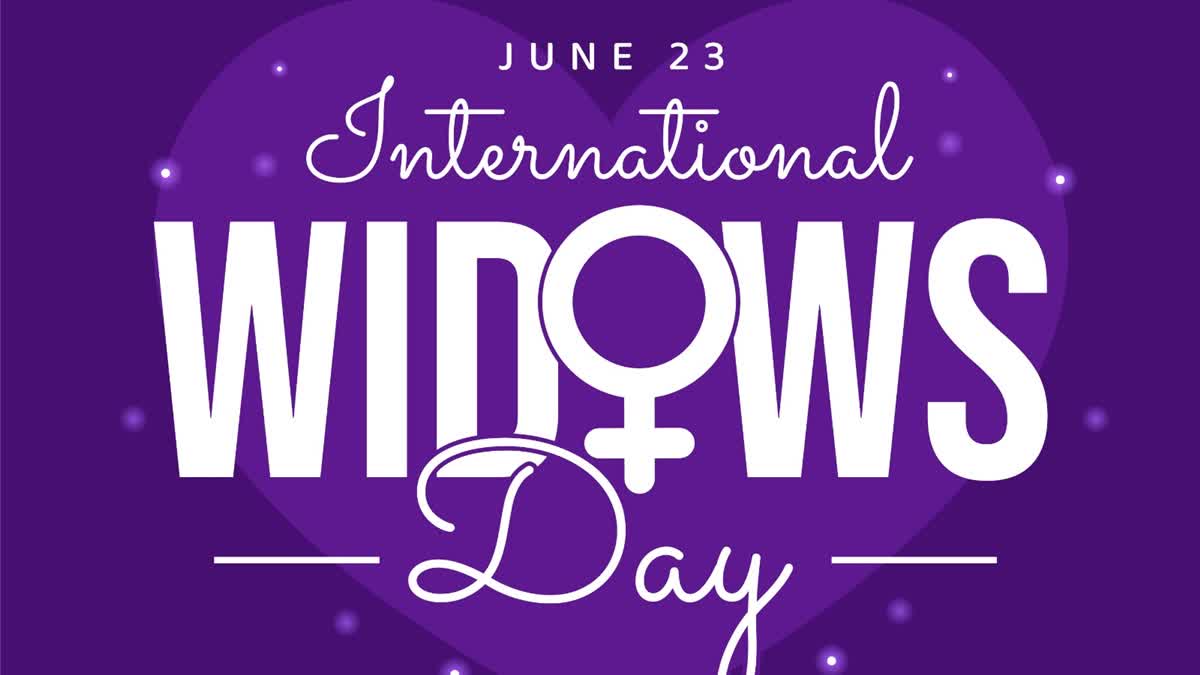Hyderabad: For many women around the world, the devastating loss of a partner is magnified by a long-term fight for their basic rights and dignity. Every year on June 23, which is observed as the International Widows' Day, special recognition is given to the situation of widows of all ages across the globe on. According to recent statistics, there are about 258 million widows in the world. Nearly one in 10 widows live in extreme poverty. This is because many widows don't have access to credit or other economic resources, including work.
Experience from the past, shows that widows are often denied inheritance rights, have their property grabbed after the death of a partner, and can face extreme stigma and discrimination, as perceived ‘carriers’ of disease. Worldwide, women are much less likely to have access to old age pensions than men, so the death of a spouse can lead to destitution for older women. In the context of lockdowns and economic closures, widows may not have access to bank accounts and pensions to pay for healthcare if they too become ill or to support themselves and their children. With lone-mother families and single older women already particularly vulnerable to poverty, this is an area that needs urgent attention.
History of International Widows' Day
The International Day of Widows was officially declared by the United Nations (UN) on 21 December 2010 by passing a resolution called "In Support of Widows and Their Children". The history of International Widows Day has its roots from the Loomba Foundation located in the United Kingdom. The foundation is a charitable trust founded by Lord Raj Loomba which works on an international level for empowerment of widows.
Background
International Widows' Day was initiated by the Loomba Foundation in 2005. The plight of widows world-wide has been the foundation's focus since it was established in 1997. According to its founder, Raj Loomba, women in many countries experience great hardship after their husbands die. “They are not looked after by governments or NGOs and they are shunned by society.” The observance falls on June 23 because Loomba's mother became a widow on that date in 1954.
Significance of International Widows’ Day
The day is important as it brings about awareness among the public the problems that widows face all over the world. It is a time to reflect on the progress that has been made, and to celebrate acts of courage and determination by ordinary women.
It is also a day to draw the attention of the people to take action and provide full rights and recognition for widows.
It spreads awareness about the challenge the widows face. The day helps to find ways to help the widows globally. The policymakers of the national governments are not acknowledging the hardships of the widows.
The widows are ignored consciously by the policymakers. This day triggers the policymakers to provide equal opportunities for widows across the globe.
It breaks the traditional stigma that widows are outcastes, rejects the idea that widows bring misfortune and creates the awareness against the stigma that widows are a waste of society or are a burden on national wealth.
The Hindu Widows' Remarriage Act, 1856 : Highlights
Marriage of Hindu widows legalized.
Rights of widow in deceased husband's property to cease on her marriage.
Guardianship of children of deceased husband on the remar-riage of his widow.
Nothing in this Act to render any childless widow capable of inheriting.
Saving of rights of widow marrying, except as provided in sections 2 to 4.
Ceremonies constituting valid marriage to have same effect on widow's marriage.
Consent to remarriage of minor widow.
Condition of Widows Before the Introduction of the Act
According to the prevalent customs in some parts of India, widows, especially upper caste-Hindu widows were expected to lead a life of austerity and extremities.
Widows remarriage was not permitted even if she was a child and the marriage was not even consummated. Widows had to wear a white saree of coarse material. In many cases, she had to shave off her hair and was not even allowed to wear a blouse.
They were boycotted from festivals and even shunned by members of the family and society.
Ishwar Chandra cited Hindu scriptures to show that widow remarriage was well within the folds of Hinduism. Through his efforts, Lord Canning enacted the Widow Remarriage Act throughout British India.
Major changes after the Establishment of the Act
As per the law: “No marriage contracted between Hindus shall be invalid, and the issue of no such marriage shall be illegitimate, by reason of the woman having been previously married or betrothed to another person who was dead at the time of such marriage, any custom and any interpretation of Hindu Law to the contrary notwithstanding.”
The law also held that widows who remarry were entitled to all the rights and inheritances that a woman who marries for the first time would have.
As per the act, the widow forfeited any inheritance that she may have obtained from her deceased husband.
The act also provided legal safeguards to men who married widows.
Widow remarriage was, however, commonplace among people of the lower castes.
